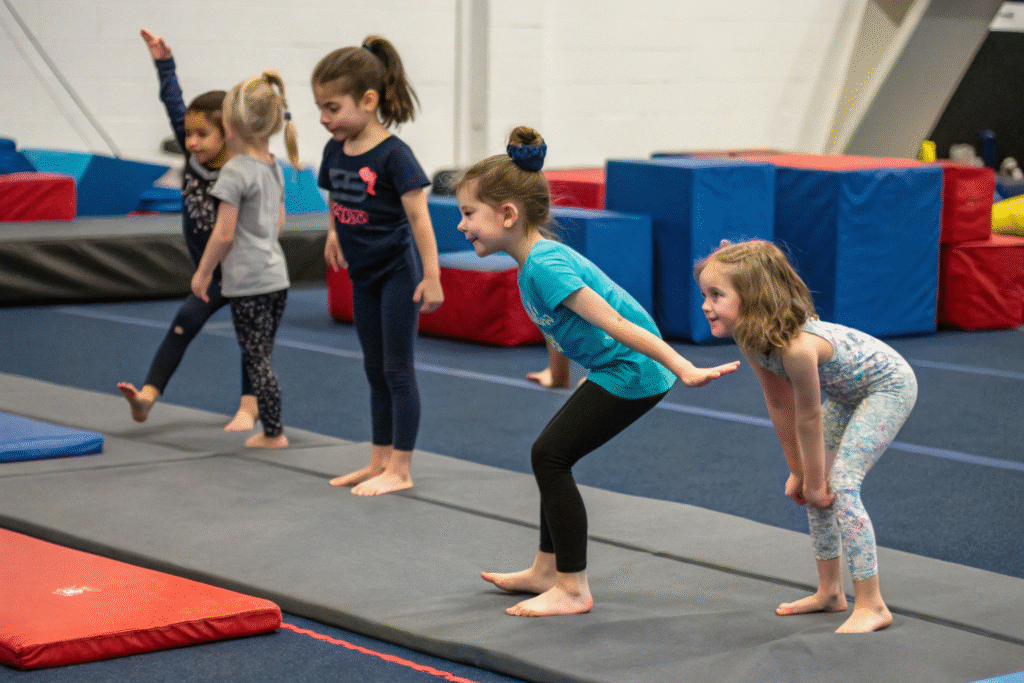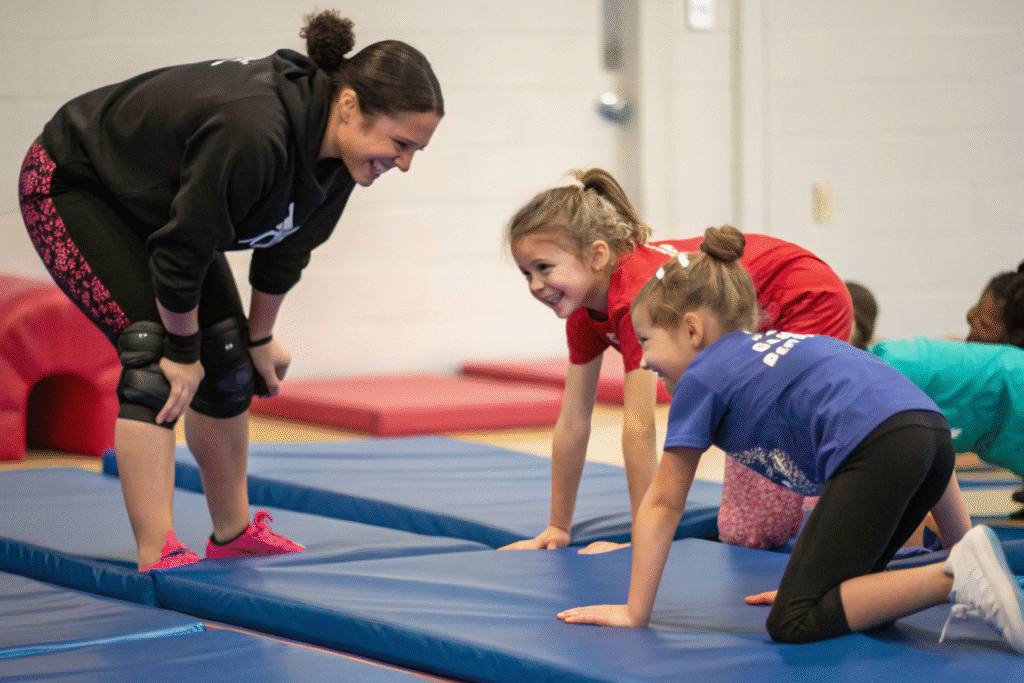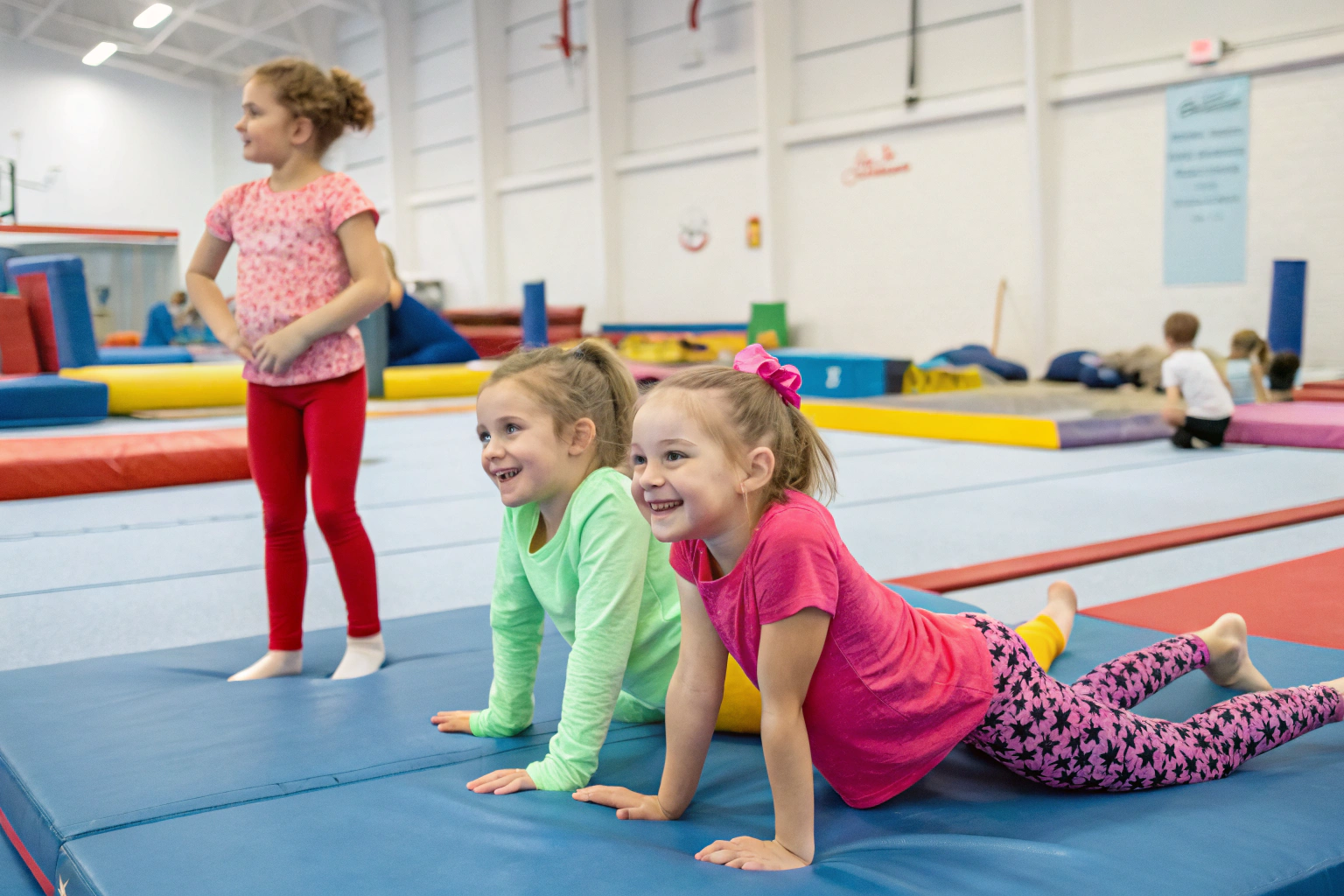Tumbling is fun, fast, and full of movement—but it also requires the right gear to keep your child safe and confident. Many parents are unsure what kids should wear to a tumbling class. Is a simple T-shirt enough? Should you buy special outfits? And what fabrics are best for comfort and flexibility?
Your child should wear fitted, stretchy, and breathable clothing to tumbling class—like cotton leggings, leotards, or snug athletic wear—so they can move freely without risk of tripping or overheating. Bare feet are usually preferred for grip and safety.
A well-chosen tumbling outfit helps your child focus on fun and learning without distraction. In this article, I’ll break down what styles and fabrics are best, why shoes are often not needed, and how to avoid safety risks during class. Whether you’re buying from a brand or producing your own kidswear line, this guide gives you real-world insight.
What’s the best outfit for tumbling safety?
Children should wear snug-fitting clothes that won’t bunch up or slide off while tumbling. Outfits like cotton leggings, bike shorts, and leotards reduce injury risk and allow instructors to check alignment.

Why is tight-fitting clothing better than loose wear?
Loose clothes like oversized T-shirts or hoodies can easily catch on equipment, slip over a child’s head during rolls, or hide their body lines from instructors. When a coach can’t see a child’s posture clearly, they can’t correct form—which leads to bad habits or potential strain.
What about zippers or drawstrings—are they dangerous?
Yes. Zippers can scratch, and drawstrings may get caught in equipment or pulled accidentally. Choose clothing with covered seams and no hanging parts. Elastic waistbands are best for flexibility and safety. Many tumbling gyms even ban clothes with buttons, snaps, or hoods for this reason.
Should kids wear shoes or go barefoot?
Most tumbling classes require children to go barefoot for better grip on mats, improved balance, and to avoid tracking in dirt. Shoes can cause slips or damage the equipment.

Are there any hygiene concerns with barefoot tumbling?
Tumbling studios usually clean mats regularly. Still, if you’re concerned, you can use grippy tumbling socks, but only if allowed by the studio. Always check their policy—some ban socks due to slipping risks.
What shoes should kids wear to and from the class?
Slip-on sneakers or sandals with socks are best for before and after class. They’re easy to remove and help keep studio floors clean. Avoid boots or shoes with complicated laces that cause delays before class begins.
What materials are ideal for movement and comfort?
Organic cotton blends or bamboo-based athletic knits offer soft touch, good stretch, and breathability. Avoid stiff or synthetic-only garments that trap heat or limit movement.

Which fabrics allow stretch without losing shape?
Look for fabrics like cotton-spandex blends or modal with elastane. These stretch with movement but recover well, avoiding sagging knees or elbows after use. They also keep kids cool by allowing airflow through the fibers.
Are natural fabrics better for skin comfort?
Yes. Natural fibers are softer and more breathable than synthetic options like polyester. For toddlers or kids with sensitive skin, organic cotton is especially helpful—it prevents irritation and avoids harsh chemicals used in standard finishes.
How can clothing prevent injuries during tumbling?
Clothing that fits well, doesn’t slide or twist, and protects the knees and elbows can prevent minor injuries and improve your child’s confidence in class.

Can clothing reduce friction burns from mats?
Absolutely. Leggings or longer bike shorts can protect the skin from mat friction during rolls. Even in summer, knee-length options help reduce rash-like irritation. Sleeveless tops are fine if they’re snug and stay in place.
Do coordinated outfits help in class?
Many tumbling studios ask for dark bottoms and light tops to help coaches quickly spot body alignment. Consistent outfit rules also prevent fashion distractions or bullying. Uniform-style clothes can also help kids feel part of a team.
Conclusion
Tumbling is more than just play—it’s movement training that builds coordination, confidence, and strength. What your child wears directly affects their safety, flexibility, and focus during class. By choosing breathable, well-fitted clothes without risky extras like zippers or drawstrings, you give your child the freedom to move without worry.
Bare feet improve balance, cotton blends keep things cool, and small details like leggings over shorts make a real difference in preventing friction burns. As a kidswear manufacturer, we’ve helped brands create tumbling collections that parents trust and kids love. If you’re developing activewear for young movers, keep safety, fabric, and studio rules at the center of every design.










